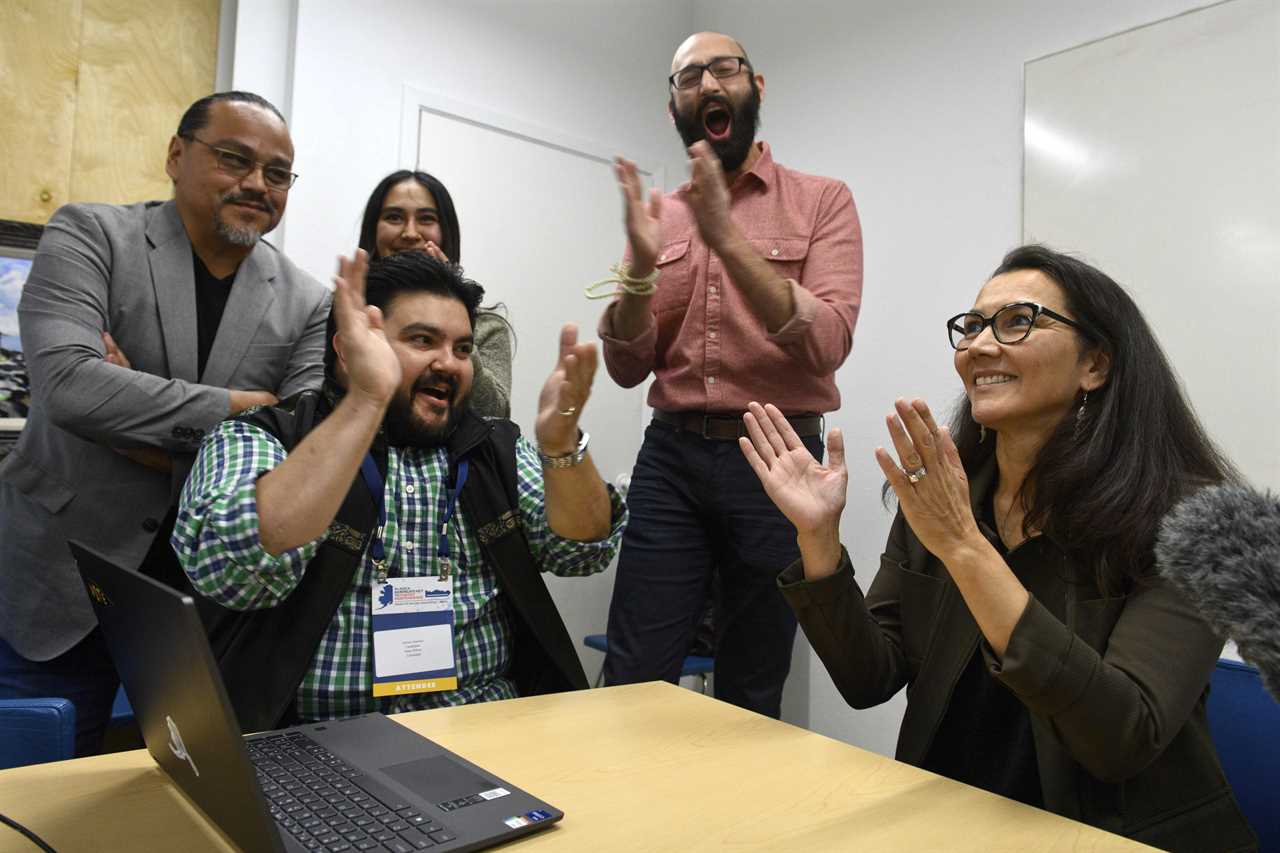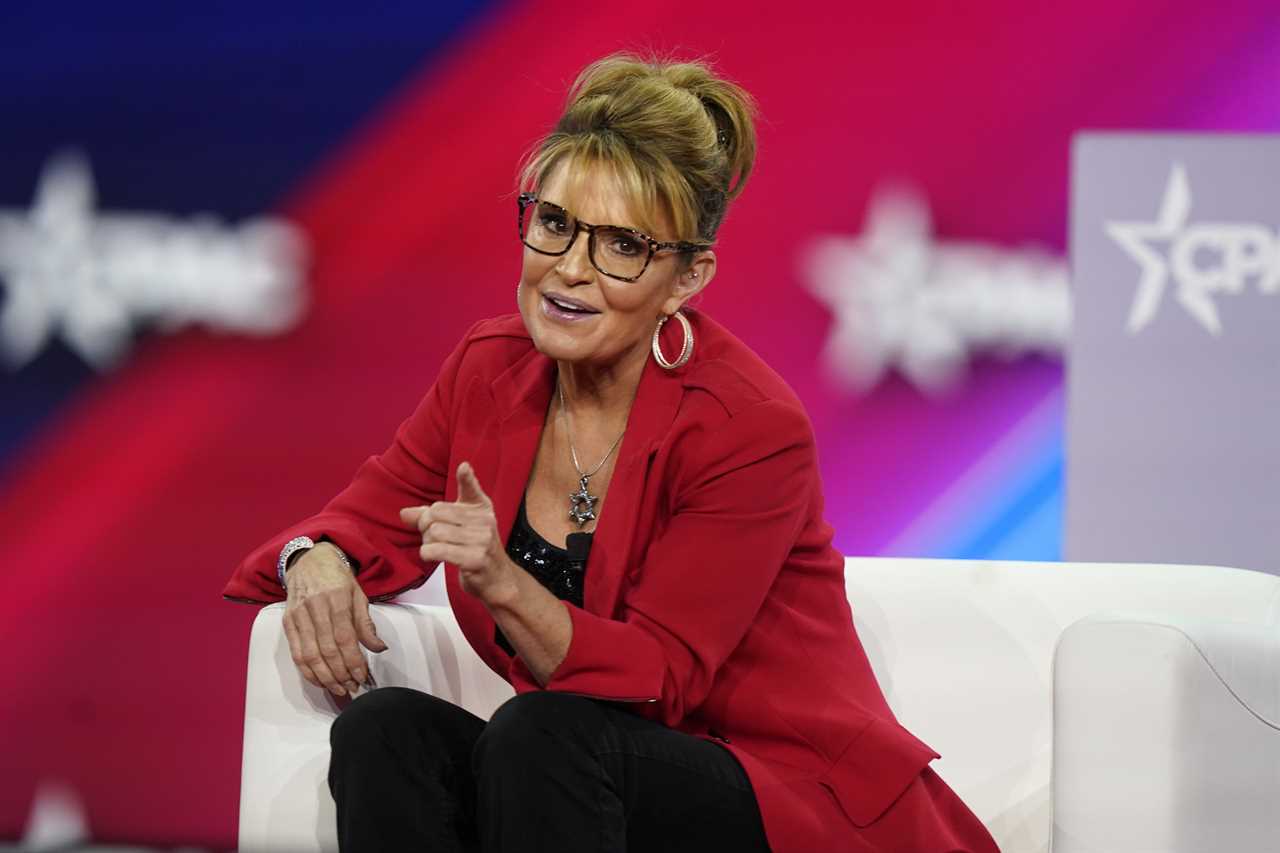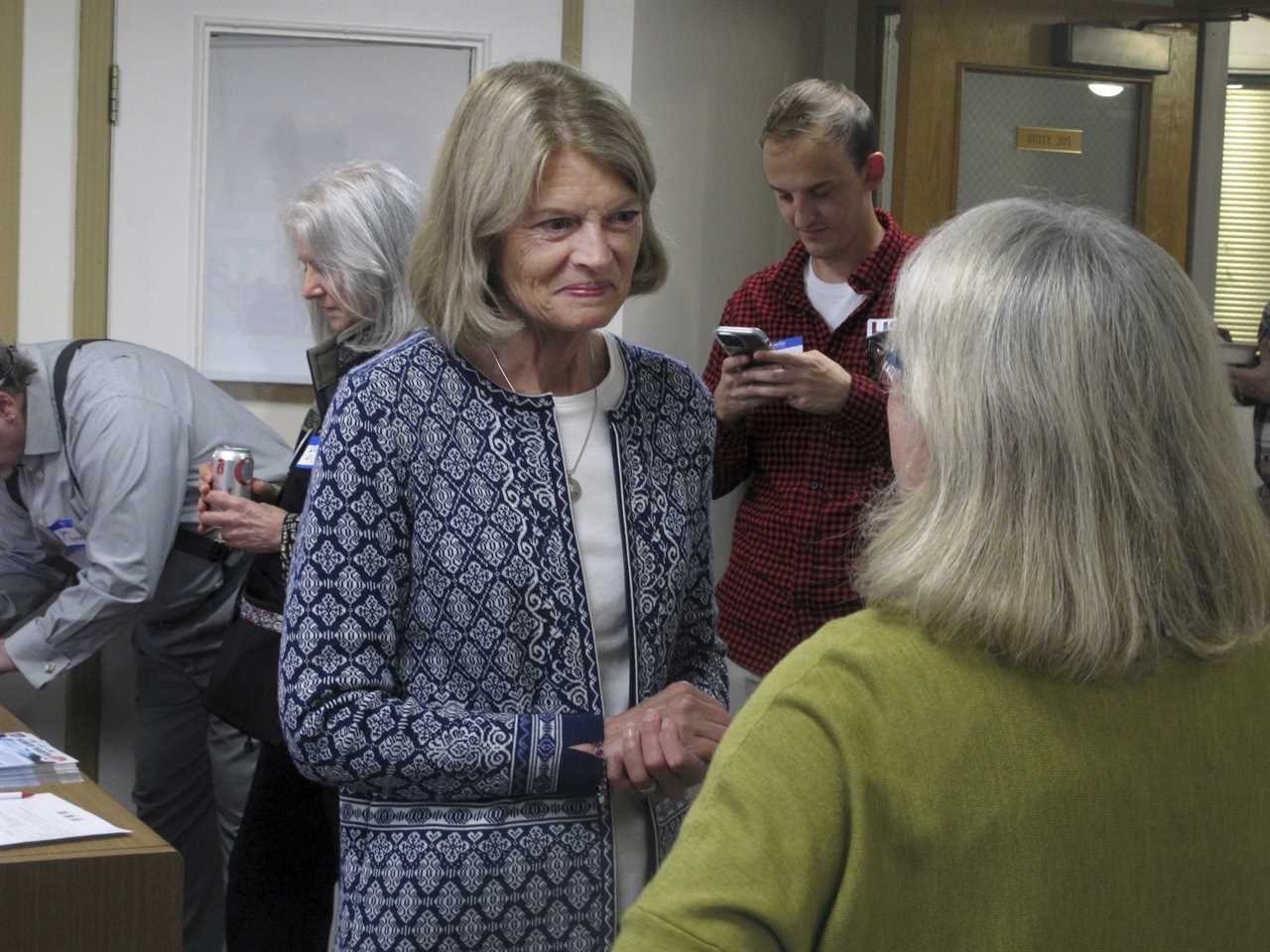
In August, former Democratic state legislator Mary Peltola beat Republican candidate Sarah Palin in Alaska’s special House election to replace the late Republican Rep. Don Young. The win was a stunning upset and a huge victory for Democrats, who haven’t scored a House seat in the state in 50 years. The victory also highlighted a number of idiosyncrasies in Alaska politics — not just the state’s famous independent streak that made many voters choose Peltola over Palin, but also ranked choice voting, which was adopted in 2020 and which many supporters say encourages the election of moderates over more ideological candidates.
Now, a rematch in November for a full two-year term promises to show whether the August results were a fluke or a feature of Alaskans’ preferences and their voting system.
In Alaska’s ranked choice system, the top four vote-getters in an open primary advance to a general election where voters rank the candidates. The fourth-place finisher is eliminated and their votes are distributed to the second-choice candidate of those voters who preferred the fourth-place candidate. The process continues until one candidate gets 50 percent plus one of the votes. Since the process encourages policies and personalities that might win second or third choice among voters, many argue candidates are more likely to pursue middle-of-the-road platforms and act civilly on the campaign trail under a ranked choice system.

As more and more jurisdictions consider ranked choice voting — and as the discussion over how to temper political polarization nationwide remains unresolved — many political observers have wondered whether Alaska is a state that might point the way to a more moderate, more nuanced way of doing politics. Ivan Moore is a longtime Alaska pollster who is considered one of the foremost experts on the state’s politics. And he has some thoughts about what the rest of the country can learn from Alaska, what to watch for in November and what came first: Alaska’s independence, or the state’s ranked choice experiment that allowed those independents to have more of a say.
Moore said he’s not sure if Alaskans are actually all that different from most other voters on the issues, but in one crucial respect, Alaskans are different. “We are less strictly partisan,” he said. “It allows us to more readily embrace nontraditional ideas like ranked choice voting, because it’s like, we think, ‘Well, what the hell, why not? Let's give it a shot.’”
Ben Jacobs: What happened in Alaska’s recent special House election, what does it say about ranked choice voting in general and whether it’s responsible for Democrats winning the special election?
Ivan Moore: I think it says a few things. Number one, that ranked choice voting worked well. Pretty flawless performance by the Alaska Division of Elections.
I don’t think everyone agrees with that. I gather that national Republicans have been making critical noises as if ranked choice voting was responsible for what happened. But ranked choice voting was not responsible for what happened. Well, obviously, if it had been done under the old system, with late Republican Rep. Don Young having passed away, the parties would have nominated replacements and there would have been a single special election between those nominees.
But when we consider whether ranked choice voting was responsible for Democratic Rep. Mary Peltola being elected, if you look at a traditional primary, Sarah Palin would, in all likelihood, have run away with the Republican primary. … And then a general election between Sarah Palin and Mary Peltola would have looked very similar to what the final ranked choice result was.
So it isn’t some kind of scurrilous result of ranked choice voting that Alaska has elected a Democrat to federal office for the first time [since 2008.]

And then the second thing that we found out is that Sarah Palin is indeed very unpopular. And that’s why she lost. The interesting thing that came out of our poll results in July, was that while she had a 60 percent negative among all voters, she had a 70 percent negative among [Republican candidate] Nick Begich voters. That's remarkable. And that just goes to show that it isn't all about partisanship and issues.
You would imagine, correctly, that the great majority of Begich’s voters are Republican and conservative. I actually remember running the results and finding that just over 60 percent of Begich voters were registered Republicans. Very few of them were Democrats, and the rest were nonpartisan/undeclared, but the majority of them were conservative-leaning. People got the message, without any doubts, that he was a conservative Republican. And yet, Sarah Palin was more unpopular amongst that group of voters than she was overall, which is astounding and just goes to show that it's not all about politics. It’s also about likability and competence and the respect that people have for the candidate. If she does win second place [in November], she will almost certainly lose again. [Because her negative ratings would seem to indicate that she would not get many second- or third-choice votes.]
The third thing that we’re finding out since the primary is that Palin and Begich can’t seem to stop squabbling. And they don’t seem to understand that this is a very bad thing to do, in the context of ranked choice voting. … Do you think that Palin having repeatedly and continually run Begich down and demanded that he get out of the race and calling him “negative Nick” is the kind of thing that will make his people more likely to put her second? And does it make her voters less likely to put him second? I mean, they just kill themselves with this in both directions. And Mary Peltola is sitting there probably rather enjoying the spectacle.
Jacobs: Is there anything we’ve learned from the special election that will be applicable to the Senate and the gubernatorial race in November?
Moore: I think in terms of the other races, Sen. Lisa Murkowski probably did a little better in her primary than was expected. But then again, Republican Senate candidate Kelly Tshibaka, who finished second in the primary, is kind of a fairly typical radioactive Trump candidate. I got the sense, tracking the race over time, that Kelly Tshibaka was one of those people where the more people got to know her, the less well she did. So I kind of wasn’t surprised. By Murkowski doing better than expected, I think Tshibaka sort of hit a ceiling and won’t go any higher.

I think the synergy between Peltola and Murkowski is very interesting. They draw from substantively contiguous voting groups predominated by Democrats and independents, political moderates, women, [abortion rights supporters], rural residents, Alaskan Natives. I mean, that was essentially the constituency that wrote in Lisa's name in 2010. And it is categorically the Mary Peltola constituency too. And so those two, even though they come from different parties, will feed off each other’s energy [in November] in a way that bodes very well for them.
And the governor's race, whether you're looking at Democratic candidate Les Gara, or independent candidate Bill Walker, the race is very simple there. One of those two will come second after the incumbent Republican Gov. Mike Dunleavy [who finished first in the primary]. And one will come third. Well, there’ll be a fourth, obviously, but the fourth person will be very minor. And then the next question is whether Les Gara or Bill Walker comes second and who comes third. They will get 95 percent of each other’s votes when the third place is eliminated. And then it just comes down to whether that’s enough to put them over 50 percent or whether Dunleavy gets there.
And so going back to the Murkowski/Peltola synergy that helps Les Gara and Bill Walker [in drawing out more moderate and liberal voters] … it’s kind of an interesting dynamic. All three races are competitive. Murkowski is probably least competitive of all. But the governor’s race, I think, in the end will be competitive. The House race, even though it's usually a foregone conclusion, or has been for the last 50 years, will be the top of the ticket, so to speak [and get the most attention].
I mean, that’s the blessing and the curse of Sarah Palin, isn't it? She just draws such fanatical attention, not only from her supporters, but also from the press and people in general. But it’s just gotten to the point where it’s too much for people. But I think the Murkowski/Peltola synergy is the most important thing that ties it all together.
Jacobs: You mentioned the Murkowski/Petola synergy. It’s rare to see that sort of cross-partisan synergy, and how much is that because Alaska is politically very unique and has a very different political culture than other states?
Moore: Well, Murkowski is an interesting case. She served with late Republican Sen. Ted Stevens for his final term and with late Republican Rep. Don Young; she was part of this Republican trio. But over time, she kind of started to draw support from a different group. It started in 2010 when tea party Senate candidate Joe Miller made his run at her from the right. … The tea party saw her as a Republican-in-name-only. And then she lost the primary to him, but went on to win as a write-in candidate in the general election. And that started the switcheroo because she then drew her support from the coalition of voters that I listed off, and then over time, she went back and forth between votes that would make Republicans happy and votes that would make Democrats happy.
The final straw was in 2017, with the Obamacare skinny repeal vote. That vote was the one where Republican Sen. John McCain dramatically went on to the Senate floor with the thumbs-down. And Republican Sens. Susan Collins and Lisa Murkowski were the other two no votes on that. And that did it for her at that point. For years before that, going back to before 2010, the dynamic was she was most popular amongst moderates, she was deeply distrusted by Republicans, and she was also distrusted by Democrats. But her strength was in the middle. It could be plotted out as kind of a hump going across the political spectrum and strongest in the middle.
It’s now moved to the point where it’s strongest among Democrats, moderately strong with moderates, and then in the absolute toilet amongst Republicans. So I don’t know if that necessarily says anything kind of unique and odd about Alaska politics.
Since the early '90s, anyway, [Alaska politics] has been very normal. Republicans have been in power, generally speaking.
But Alaska has a somewhat unconventional streak. To look at the Legislature again, we’ve had a few bipartisan coalitions both in the House and the Senate over the years. And that says something about how, I think, we don’t subscribe to the groups and partisanship that inflicts other states. We are all, both Republicans and Democrats, more willing to occupy the middle and cross the aisle.
Alaskans are unconventional, and they’re very independent. Although the political parties are dominated by the extreme wings on both sides, [I’d estimate that] the extreme wing of the Republican Party in Alaska in terms of current voters is 20 percent and the extreme wing, as far as voters, on the Democratic side, is 10 percent. That leaves 70 percent leftover.
And that 70 percent look at people like Murkowski and go, “Not everything she does I like. She's sensible, and usually does what she thinks is best.” They look at people like Bill Walker, and they go, “I like his independence and his willingness to do the right thing.” They look at bipartisan coalitions in the Legislature, and they go, “I kind of like that, too.” So that’s good. We’ve got a big, healthy middle in Alaska, much more than it is kind of a deep red state. It's not necessarily purple. It's got a strong red tinge at one end, a strong blue tinge on the other, and then a big purple streak all the way across the middle.

Jacobs: That’s the question about ranked choice — was Alaska already like this, or did ranked choice make it more moderate and independent?
Moore: I think ranked choice voting is definitively there because of the big middle. I mean, it passed. What a terrific, progressive, exciting, good, bold idea that had 51 percent of the population's support. It wasn't necessarily an overwhelming victory. But it was a huge surprise, really, in Alaska, and probably outside, that we took this bold step. And I hope not for any partisan reasons, because I truly believe that ranked choice voting doesn’t really objectively favor one side or another. In fact, you could make good arguments that it actually favors Republicans more. But I don’t think the mechanism of it necessarily hurts one side or the other.
In polling, when you ask people if they think rank choice voting is a good thing or a bad thing, conservatives are 6 to 1 more likely to say it’s a bad thing. Progressives, it’s 6 to 1 a good thing, and the people in the middle are 2 to 1 a good thing. So conservatives hate it. But conservatives hate it for partisan reasons. Number one, that it threw Murkowski a lifeline when she would have been dead meat under the Republican primary system. And secondarily, adopting ranked choice voting necessarily got rid of the Republican primary. And so that changes the tenor of the successful candidates. It’s not really ranked choice voting. It’s the fact that when we don’t have a primary system that is designed to elect essentially, the most extreme candidates on both sides, which I don’t think was good for either side. So, what has helped candidates in the middle is the fact that we’ve got rid of that system.
Jacobs: But in terms of the differences between the national electorate and Alaska’s electorate, how different are they?
Moore: We are less strictly partisan. An old adage, which is popular in Alaska, is you vote for the person, not the party. But I don’t think on many issues, that necessarily makes us really different. It allows us to more readily embrace nontraditional ideas like ranked choice voting, because it's like, we think, “Well, what the hell, why not? Let's give it a shot.” Almost all Alaskans were not born here. They came here. They’ve got a spirit of adventurism, which is kind of part of their makeup. They wouldn’t be here otherwise, right? So we like bold ideas.
But does this make us fundamentally different from the rest of the country? I don’t think so. There have been a number of times that I’ve polled on issues and gotten the same results that other national pollsters have found. Most recently, on the issue of Roe v. Wade and abortion rights, the numbers in Alaska are almost exactly the same as the national numbers. Alaskans poll almost exactly the same on questions of whether they are kind of inclined toward [the abortion rights or anti-abortion side], and whether they want to see abortion rights codified in law nationally. So are we different? Not all that different.
We're just different in spirit, I think, in adventurism. That allows us to embrace new ideas, in the same way that we embraced a new place.
----------------------------------------
By: Ben Jacobs
Title: America’s Weirdest Voters Test Its Newest Voting System
Sourced From: www.politico.com/news/magazine/2022/09/30/americas-weirdest-voters-test-its-newest-voting-system-00059376
Published Date: Fri, 30 Sep 2022 03:30:00 EST






